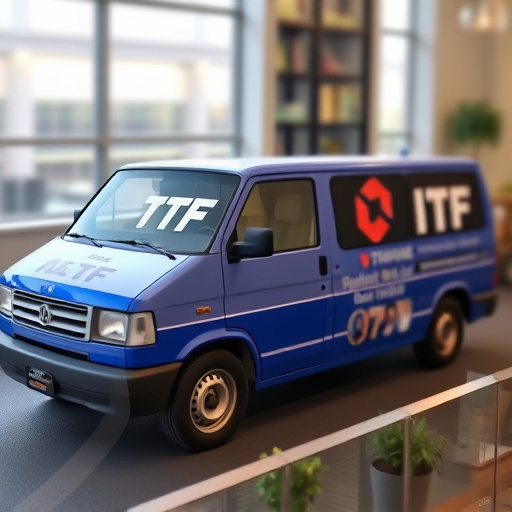Optimizing air intake systems is a strategic approach to boost engine performance for demanding tasks like towing. By using high-flow air filters, cold air intakes (CAI), and variable valve timing, engines receive cleaner and denser oxygen, improving combustion efficiency and torque output. These upgrades, combined with mechanical adjustments like high-performance pistons or modified camshaft profiles, enhance power and responsiveness during towing, leading to smoother acceleration and increased overall capability without compromising fuel efficiency.
In the pursuit of vehicular excellence, understanding the intricate relationship between air intake, torque output, and acceleration is key. This article explores powerful strategies to enhance your vehicle’s performance across various driving scenarios. From optimizing air intake for peak engine efficiency to techniques that boost torque and improve towing capabilities, discover proven methods to unlock hidden potential. Elevate your driving experience with these insights tailored for maximum power and swift acceleration.
- Understanding Air Intake and Its Impact on Engine Performance
- Enhancing Torque: Strategies for Maximum Power Output
- Optimizing Towing Capabilities: Techniques for Improved Acceleration
Understanding Air Intake and Its Impact on Engine Performance

In the quest for improved engine performance, especially in applications like towing and high-torque demands, understanding air intake systems is key. Air intake, the process by which an engine draws in atmospheric air, plays a pivotal role in how efficiently fuel is burned, ultimately affecting power output and vehicle dynamics. Optimizing this system involves not just increasing airflow but ensuring it’s done so in a way that maintains air-fuel mixture stability for optimal combustion.
The impact of air intake on performance isn’t confined to power alone. It influences responsiveness, too—how quickly the engine accelerates under load. By employing advanced intake technologies, such as larger or strategically designed air filters, cold air intakes (which bring in denser, cooler air), and variable valve timing, engineers can unlock significant torque improvements. These modifications facilitate better airflow, enhancing the overall efficiency of the engine and delivering a smoother, more powerful driving experience.
Enhancing Torque: Strategies for Maximum Power Output

To enhance torque and boost power output, especially for vehicles designed for towing or high-performance driving, focusing on air intake modifications is a strategic move. Optimizing the air intake system allows for more efficient airflow, ensuring that the engine receives the maximum amount of oxygen required to produce more power. This can be achieved through the use of high-flow air filters, which remove contaminants from the air stream, allowing cleaner and denser air to enter the engine. Additionally, upgrading to a cold air intake (CAI) system, which draws air from outside the vehicle, often in cooler temperatures, enhances combustion efficiency.
Combining these air intake torque improvements with other modifications like a tuned fuel injection system and optimized ignition timing can lead to significant gains in power output. For towing applications, this means better performance while hauling heavy loads, resulting in smoother acceleration and increased overall capability. Such strategies not only enhance the vehicle’s performance but also ensure that it can handle demanding tasks without compromising efficiency.
Optimizing Towing Capabilities: Techniques for Improved Acceleration

Optimizing towing capabilities is a key strategy for enhancing vehicle acceleration, especially for those who frequently haul heavy loads or tow trailers. One effective technique involves upgrading the air intake system to improve torque output. By maximizing the airflow and ensuring efficient gas exchange, you can unlock additional horsepower, resulting in quicker acceleration. High-flow air intakes, designed with larger filters and optimized ducting, are known to deliver significant gains. These modifications allow for better engine breathing, enabling it to ingest more air during each intake stroke.
Additionally, focusing on torque improvements through specific mechanical adjustments can dramatically affect towing performance. Upgrading the engine, such as installing high-performance pistons or modifying the camshaft profile, directly contributes to increased torque across the rev range. These changes enhance the engine’s ability to deliver power at lower RPMs, making it easier to accelerate while under load. When combined with optimized air intake and efficient transmission shifting, these techniques can revolutionize the towing experience, ensuring smoother and faster acceleration while carrying a heavy trailer.
In conclusion, optimizing air intake, enhancing torque, and improving towing capabilities are key strategies for achieving better vehicle acceleration. By understanding the impact of air intake on engine performance, implementing effective techniques to boost torque, and utilizing methods that enhance towing efficiency, drivers can experience significant improvements in overall vehicle dynamics and driving pleasure. These advancements, powered by intelligent engineering and strategic modifications, ensure a smoother, more responsive ride while maximizing both power output and fuel efficiency.














